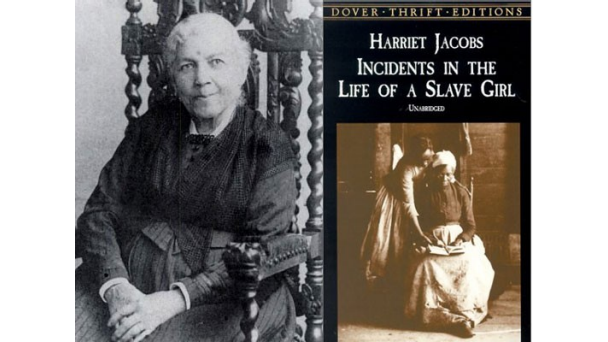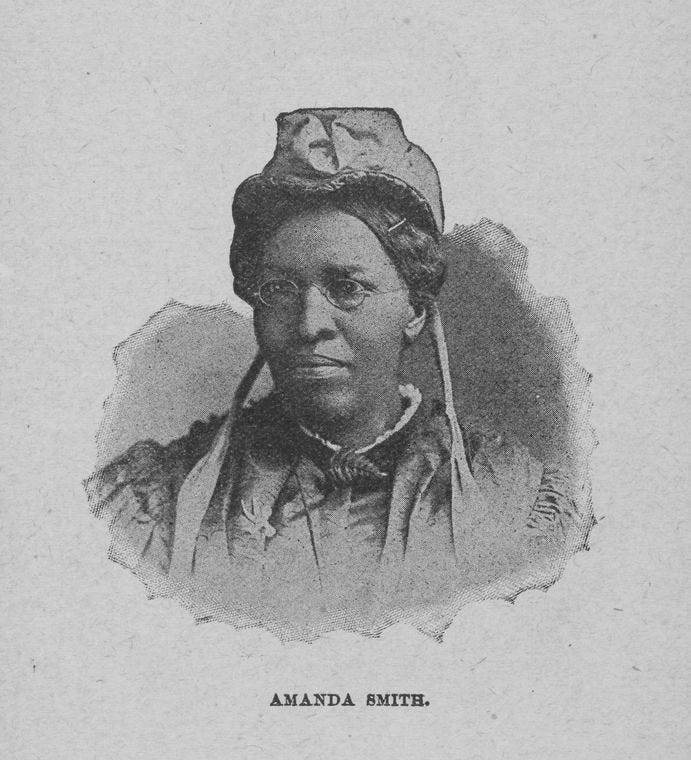Four INSPIRING Black Christians from the 1800s
These Three Women and One Man From the 19th Century Are Definitely Four Black Christians Who You Need To Know
Mary Prince, Harriet Ann Jacobs, Thomas Lewis Johnson, and Amanda Smith are four black Christians - three women and one man- from the 19th century whom you need to know.
MARY PRINCE
(1788-1833)
First woman to petition Parliament for freedom
Mary Prince experienced a difficult life in her youth. Born in Bermuda to an enslaved family, she described her journey as an enslaved woman as “going from one butcher to another”. While in Antigua, she joined the Moravian church where she attended classes taught by Moravian missionaries and learned how to read. She was later baptized into the Church of England and taken to London in 1828 under the control of the Wood family. Mary Prince sought refuge with the Anti-Slavery Society later that same year:
“I took courage and resolved that I would not be longer thus treated, but would go and trust to Providence."
In 1829, Prince petitioned Parliament for her freedom – the first woman to do so. Her attempts were not successful but shortly after a bill was introduced to free all slaves from the West Indies in England whose owners had freely brought them there.
That year she was employed as a domestic servant for abolitionist Thomas Pringle. While there, Prince’s memoirs were transcribed by Susana (Strickland) Moodie, a Methodist member of the anti-slavery movement in London. In 1831, Pringle edited and financed Prince’s autobiography, The History of Mary Prince. It proved to be both popular and controversial; three editions were printed that year, followed by litigation.
Pro-slaver James MacQueen attacked her and Pringle in Blackwood’s Magazine. Pringle subsequently sued the publisher, Thomas Cadell, in 1833. Then, her former master, John Adams Wood, Jr., sued Pringle for libel! Prince testified in both cases. Regarding the outcome of the cases, a 2008 article “Yearning for Freedom”, states: “In the first, Pringle v. Cadell, Pringle won with damages coming to him in the order of ₤3. In the second, Wood v. Pringle, Wood won, the judge saying that Mary Prince’s testimony was exaggerated; damages coming to Wood were in the order of ₤25.”
Sadly, little is known about her afterwards. Prince was declared a National Hero of Bermuda in 2012. In 2018 she received her own Google Doodle, where the entry reads:
“Her book played a decisive role in turning British public opinion against the centuries-old institution of human enslavement.”
HARRIET ANN JACOBS
(1813-1897)
Challenged hypocrisy of “Christian” slave owners
Jacobs’ 1861 autobiography, Incidents in the Life of a Slave Girl, was republished in England in 1862 as The Deeper Wrong. The narrative focused on the sexual abuse suffered by female slaves, something she had experienced at the hands of her ‘master’. She said:
“there is a great difference between Christianity and religion at the south…no matter if it be the price of blood, he is called religious”.
Jacobs recollects how her first mistress taught her “the precepts of God’s Word” and that Christians should “love thy neighbor as thyself”, but, she concluded: “I suppose she did not recognise me as her neighbor”.
Jacobs wrote that plantation owners “satisfy their consciences with the doctrine that God created the Africans to be slaves…What a libel upon the heavenly Father, who made of one blood all nations of men”, an allusion to Acts 17:26.
Despite seeing the hypocrisy in the Church, Jacobs was a devout Christian herself, even praying with her grandmother before escaping her master, Dr James Norcom. Her staunch faith in Christ is evident in her letters in The Harriet Jacobs Family Papers. Harriet travelled to England in 1845, 1858, and finally in 1867, this time to raise funds for an orphanage that also cared for elderly former slaves of Savannah, Georgia.
Harriet Ann Jacobs tombstone is inscribed with Romans 12:11-12: “Patient in tribulation, fervent in spirit serving the Lord”.
THOMAS LEWIS JOHNSON
(1836-1921)
Baptist missionary, black student of Spurgeon’s College
Thomas Lewis Johnson was born in Virginia to an enslaved mother and free father. His mother’s master refused to sell her and her son to their father and so he was sent away to work from a very young age. As he grew, so did his interest in Christianity. Johnson recalls:
“I used to think how nice it must be in heaven, ‘no slaves, all free’, and God would think as much of the black people as he did of the white”.
Johnson was converted after a street encounter with an evangelist, who communicated “the simple gospel” to him.
That night, Johnson prayed: “O Lord have mercy upon me, a hell-deserving sinner, for Jesus’ sake.”
Johnson was freed from slavery after the Civil War and he moved to New York and then to Chicago, where he was ordained as a Baptist minister in 1869. He went on to pastor a congregation in Denver.
He later moved to the UK and studied at Spurgeon’s College in 1876, becoming one its first black students (Peter Morden, C. H. Spurgeon: The People’s Preacher (Farnham, Surrey, UK: Crusade for World Revival, 2009), 127). The first time Johnson met Spurgeon he sang ‘Steal away home’. In 2018, a book by that same title was released detailing the unique relationship between the two men (see https://stealawayhomebook.bhpublishinggroup.com).
Johnson worked with the Anti-Slavery Society and in 1878 travelled to Sierra Leonne, Liberia and Cameroon as a Baptist missionary.
“One day I must go to Africa,” Johnson said, “the land of my fathers, to preach the Gospel to my long-benighted people.”
He returned in 1882 to raise support for missionaries in Congo. He published Africa for Christ: Twenty-Eight Years a Slave in the same year. The evangelistically-minded autobiography went through seven editions during Johnson’s lifetime. Johnson became well known in Britain, sharing the stage with Edward VII, the Prince of Wales, during an anti-slavery celebration in 1884. He had a fruitful ministry both across Africa and Britain. He died in 1921 at the age of 85.
AMANDA SMITH
(1837-1915)
Remarkable Evangelist
Amanda Smith was born a slave in Maryland, the eldest of 13 children. She was freed when she became a teenager, married at 17 and widowed at 26. She experienced a momentous conversion at a Baptist revival meeting in 1856 and was later ordained as a deacon at the historic African Methodist Episcopal Church, Mother Bethel.
After her second husband died in 1869, Smith began speaking and singing at meetings in New Jersey and soon the rest of the US. Overcoming her fear of the sea, she travelled to England to minister in 1878. Despite prejudice from the other travelers, the captain asked her to conduct services as they crossed the Atlantic and she eventually won over her fellow passengers.
Smith was received very well in Britain and went on to minister throughout England and Scotland for the next three years. Later she travelled to Liberia and India where she spent eight years as a Methodist missionary.
In 1893 she published her autobiography The Story of the Lord’s Dealings with Mrs Amanda Smith, the Colored Evangelist. In her final years, Smith took money from the sales of her autobiography and opened an orphanage south of Chicago in Illinois. In a 1926 work,
Author Hallie Quinn Brown called Smith “one of the most remarkable preachers of any race and of any age”.
CONCLUSION
Let these men and women who lived in the 1800s be an inspiration to you today, to live for Christ, no matter the circumstance.
THANK YOU FOR READING









